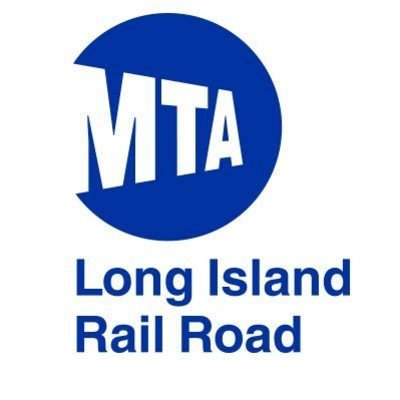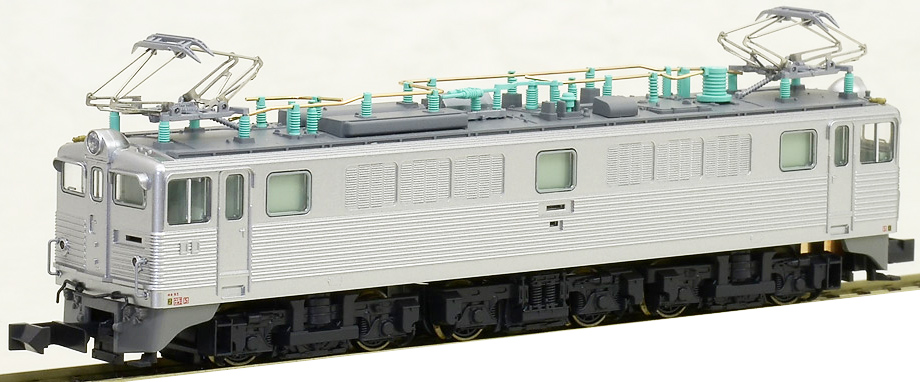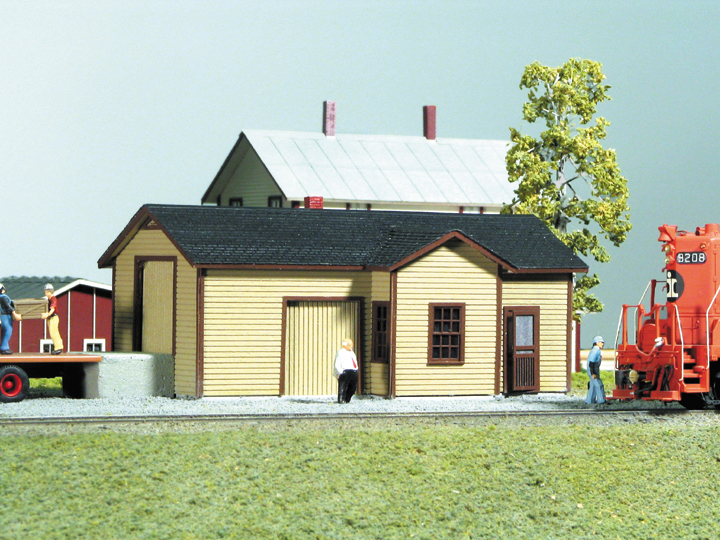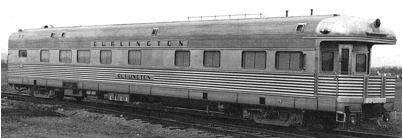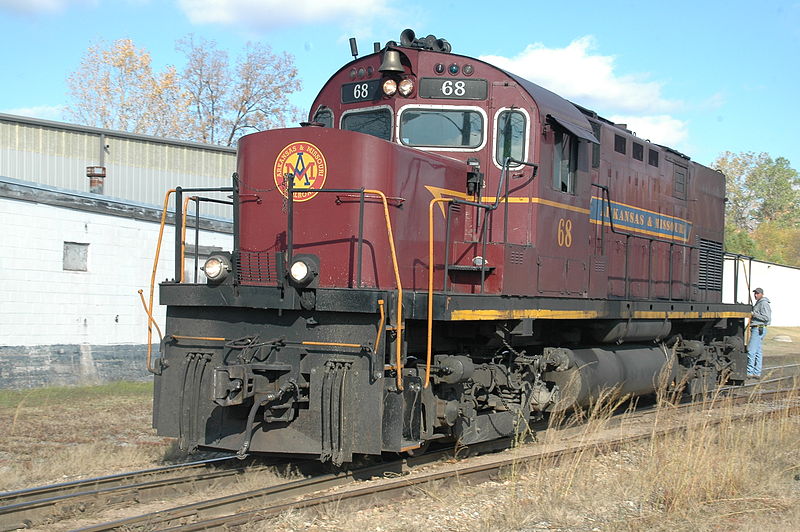Body Style Information: With etched metal radiator walkways, fine-scale handrails, see-through step detail on sills, and painted crew members, the Atlas Model Railroad Alco Century 420 diesel locomotives have an array of separately-applied scale detail parts like cab sun shades, coupler cut levers, drop steps, handrails, metal grab irons, multiple-unit hoses, train line hoses, and windshield wipers.
For optimum performance at all speeds, the models are driven by five-pole skewed armature motors, with dual flywheels.
The C420s have directional lighting and golden-white LEDs.
Decoder-Ready, Atlas Master Series Silver models are fitted with an NMRA 8-pin plug for DCC use.
With authentic sounds, Atlas Master Series Gold models are fitted with dual-mode decoders that run on DCC, or traditional DC equipped layouts.
For optimum performance at all speeds, the models are driven by five-pole skewed armature motors, with dual flywheels.
The C420s have directional lighting and golden-white LEDs.
Decoder-Ready, Atlas Master Series Silver models are fitted with an NMRA 8-pin plug for DCC use.
With authentic sounds, Atlas Master Series Gold models are fitted with dual-mode decoders that run on DCC, or traditional DC equipped layouts.
Prototype Information: ALCo built a total of 131 Century 420 locomotives between 1963 and 1969, when the builder ceased all new locomotive production. Powered by a 12-cylinder, turbocharged, 2,000-hp 251-series prime mover, the C420’s direct competitor in 1963 was the EMD GP18. In fact, EMD did not offer a 12-cylinder, 2,000-hp prime mover until the GP39 model was produced in 1969. The shorter 12-cylinder engine block allowed the C420 to have its distinctive set-back cab and extended short hood.
The first road to purchase the C420 was the Lehigh & Hudson River, with its first two units built in 1963. The largest fleet was purchased by the Long Island Railroad, with 30 units built between 1963 and 1968. All were equipped with a high short hood which housed a steam generator for passenger service. Over time, the largest fleet of C420s was amassed by the Louisville & Nashville. While only 26 units were purchased new, their total fleet grew to well over 60 units through mergers and acquisitions. The C420 can still be found in daily service today in the US. Currently the largest fleet of C420s is operated by the Arkansas & Missouri Railroad.
The first road to purchase the C420 was the Lehigh & Hudson River, with its first two units built in 1963. The largest fleet was purchased by the Long Island Railroad, with 30 units built between 1963 and 1968. All were equipped with a high short hood which housed a steam generator for passenger service. Over time, the largest fleet of C420s was amassed by the Louisville & Nashville. While only 26 units were purchased new, their total fleet grew to well over 60 units through mergers and acquisitions. The C420 can still be found in daily service today in the US. Currently the largest fleet of C420s is operated by the Arkansas & Missouri Railroad.
Road/Company Information: The LIRR was established in 1834 as part of a ferry-rail-ferry-rail route linking New York City with Boston. Within a few years, an all-rail route (later becoming the New Haven) was completed and LIRR’s through traffic evaporated. In the 1880s, the LIRR absorbed all of the other railroads on the island and settled in to a life of dependable local service. This included what may have been the first WOFC (wagon on flat car) service.
In 1900, Pennsylvania Railroad bought control of the LIRR and began incorporating it into their plans for Penn Station in Manhattan. This included electrifying certain routes on the west end of the LIRR with 600 volt DC third rail. The steam locomotive fleet began to take on a distinctly Pennsy look. Over the next 20 years, Long Island began to develop into a bedroom community for New York City and the LIRR stepped in to become the transport of choice for tens of thousands of daily commuters.
However, running commuter trains is an inherently dodgy business. It requires large investments in equipment and facilities that are used for two brief windows of time during the day, then sit idle for the rest of the time. The problem was made worse by the state of New York who froze ticket prices at the end of the First World War and left them there until after the Second World War. The LIRR slipped into bankruptcy. Parent PRR and the state came to an agreement. New York’s onerous property taxes were relaxed, ticket fares were allowed to rise and PRR began modernizing the LIRR. Steam was replaced with diesels primarily from Alco and Fairbanks-Morse. EMD’s joined the party in 1976.
In 1966, a state agency (later called the Metropolitan Transportation Authority) bought control of the LIRR from the Pennsylvania Railroad. Under state control, the LIRR gradually lost interest in their freight service and in 1997 freight operations were turned over to the New York & Atlantic Railway. The LIRR remains today America’s largest passenger hauler, moving over a third of a million passengers on a typical weekday.
In 1900, Pennsylvania Railroad bought control of the LIRR and began incorporating it into their plans for Penn Station in Manhattan. This included electrifying certain routes on the west end of the LIRR with 600 volt DC third rail. The steam locomotive fleet began to take on a distinctly Pennsy look. Over the next 20 years, Long Island began to develop into a bedroom community for New York City and the LIRR stepped in to become the transport of choice for tens of thousands of daily commuters.
However, running commuter trains is an inherently dodgy business. It requires large investments in equipment and facilities that are used for two brief windows of time during the day, then sit idle for the rest of the time. The problem was made worse by the state of New York who froze ticket prices at the end of the First World War and left them there until after the Second World War. The LIRR slipped into bankruptcy. Parent PRR and the state came to an agreement. New York’s onerous property taxes were relaxed, ticket fares were allowed to rise and PRR began modernizing the LIRR. Steam was replaced with diesels primarily from Alco and Fairbanks-Morse. EMD’s joined the party in 1976.
In 1966, a state agency (later called the Metropolitan Transportation Authority) bought control of the LIRR from the Pennsylvania Railroad. Under state control, the LIRR gradually lost interest in their freight service and in 1997 freight operations were turned over to the New York & Atlantic Railway. The LIRR remains today America’s largest passenger hauler, moving over a third of a million passengers on a typical weekday.
Brand/Importer Information: In 1924 Stephan Schaffan, Sr. founded the Atlas Tool Company in Newark, New Jersey. In 1933 his son, Stephan Schaffan, Jr., came to work for his father at the age of sixteen. Steve Jr. built model airplanes as a hobby and frequented a local hobby shop. Being an enterprising young man, he would often ask the owner if there was anything he could do to earn some extra spending money. Tired of listening to his requests, the hobby-store owner threw some model railroad track parts his way and said, "Here, see if you can improve on this".
Atlas has made a ton of wonderful products throughout the years and we often get questions one whether we have run a certain road name on a particular model. It should be noted that Atlas locomotives and rolling stock are greatly appreciated for their superior operating and running characteristics. Atlas products are also well known for their outstanding collectability not only due to their superior prototypical workmanship, details and decoration, but because there are relatively so few of them made. Each and every production run has been carefully built to market demand, meaning almost every piece in any given run is sold out by Atlas on arrival or shortly thereafter, thus creating a built in collectors market.
Atlas has made a ton of wonderful products throughout the years and we often get questions one whether we have run a certain road name on a particular model. It should be noted that Atlas locomotives and rolling stock are greatly appreciated for their superior operating and running characteristics. Atlas products are also well known for their outstanding collectability not only due to their superior prototypical workmanship, details and decoration, but because there are relatively so few of them made. Each and every production run has been carefully built to market demand, meaning almost every piece in any given run is sold out by Atlas on arrival or shortly thereafter, thus creating a built in collectors market.
Item created by: nscalemodeler160 on 2016-08-02 11:24:08. Last edited by gdm on 2020-05-23 15:48:51
If you see errors or missing data in this entry, please feel free to log in and edit it. Anyone with a Gmail account can log in instantly.
If you see errors or missing data in this entry, please feel free to log in and edit it. Anyone with a Gmail account can log in instantly.



